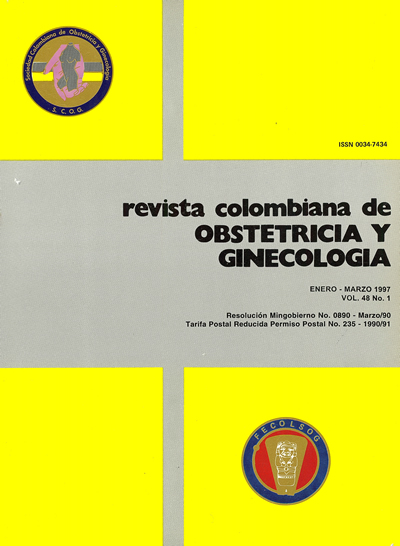Fertilidad de las mujeres que practican la lactancia exclusiva en el período postparto temprano
DOI:
https://doi.org/10.18597/rcog.2949Abstract
Objetivo: Examinar la hemorragia entre las 6 y 8 semanas postparto en mujeres que ofrecen lactancia materna exclusiva y su asociación con la fertilidad determinada por análisis hormonal.
Métodos: Se siguieron setenta y dos mujeres con lactancia exclusiva en forma prospectiva desde los 42 días postparto. El sangrado vaginal se registró diariamente. Se compararon las mujeres que presentaron sangrado se compararon con aquellas que no lo presentaron con respecto al tiempo de ovulación y el tiempo de la primera menstruación.
Resultados: casi la mitad de las mujeres presentaron algún tipo de sangrado o manchado entre las 6 y 8 semanas postparto. Estas mujeres eventualmente menstruaron y ovularon mas tempranamente que aquellas que no presentaron sangrado, pero las diferencias no fueron significativas. El estudio tenía un poder del 34 y 45% para detectar una diferencia del 20% en la proporción de mujeres ovulando y menstruando, respectivamente, a los 6 meses postparto, y un poder de 10 y 16% para detectar las mismas diferencias al año. Siete mujeres experimentaron desarrollo folicular ovárico antes del día 56, pero ni la hemorragia ni el desarrollo folicular se asociaron con ovulación en ninguna mujer en las primeras 8 semanas postparto.
Conclusiones: Es improbable que la hemorragia vaginal postparto en mujeres que practican lactancia exclusiva en las primeras 8 semanas postparto represente un retorno a la fertilidad.
Author Biographies
Cynthia M. Visness
Kathy I. Kennedy
Barbara A. Gross
Suzanne Parenteau-Carreau
Anna M. Flynn
James B. Brown
How to Cite
Downloads
Downloads
Issue
Section
| Article metrics | |
|---|---|
| Abstract views | |
| Galley vies | |
| PDF Views | |
| HTML views | |
| Other views | |
















